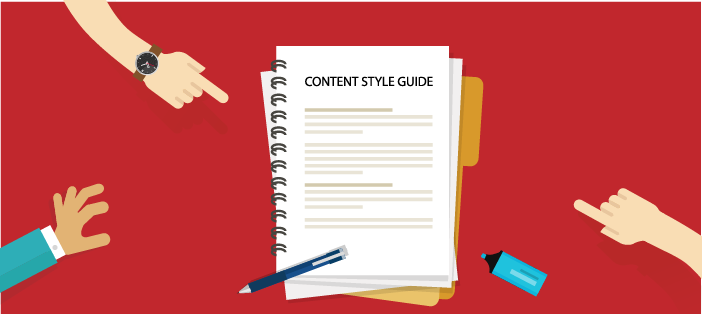5 Ways an Editorial Style Guide Benefits Your Writing

As a copyeditor of hundreds of books and dozens of websites, I rely heavily on the editorial style guide. A style guide provides a set of rules for grammar, spelling, punctuation and usage. It’s normally created by the editor or content manager. If it’s for a book, it will travel with the manuscript through the publication process so that all reviewers can reference it. If it’s for a website or organization, it will be more of a living document refined over time by the content team.
Much of what comes across as seamless in a published piece is thanks to the style guide, which dictates such questions as when to italicize, whether to spell out numbers or use digits, and the preferred spelling of words like “toward/towards.” When compared to other factors like scene setting, plot or strength of argument, these details might seem dull and unimportant. But I have found that a thorough style guide is a prerequisite for all great writing.
Here are five reasons why.
1. It forces the writer to consider details
When you’re using an editorial style guide, you end up carefully considering a parade of details. End this sentence with a preposition? Nope. Introductory phrase missing a comma? Add one! A “team of eleven” or a “team of 11”? Choose one and stick with it.
The presence of a style guide forces you to look closely at each sentence. The closer you look, the more likely your words will be clear, focused and purposeful. This is the foundation for better writing.
2. It provides consistency
It can be tough to stay consistent in a long novel or among a team of writers. At the beginning of the book, you might have spelled the main character’s sister’s name “Jenny,” but in the last chapter she might reappear as “Jennie.” One writer could be comfortable with the series comma, whereas another might’ve cut his teeth on the Associated Press Stylebook and eschew it. You might find “Gretchen Hart, Director of Information Technology” in a press release but “Gretchen Hart, IT Director” on the website.
To keep your brand strong, you must banish these inconsistencies, which you can achieve with a careful style guide. Maintaining consistency is also vital for projecting professionalism. Just like typos can sabotage your authority, sloppy writing can make it seem like you just don’t care that much.
Related Content: Why Every Business Needs to Develop a Content Style Guide Today
3. Readers don’t get distracted
You know how annoying it is when you’re watching a movie and a person’s hairstyle switches midscene, one minute swept back into a ponytail and the next cascading down their shoulders? Continuity errors like this turn your attention to things like hair and the placement of coffee cups instead of the content of the movie.
This is also what happens when the names of characters or restaurants change or a book title is italicized one place and set in quotes somewhere else. These little inconsistencies start to distract the reader from the point of the writing. A thorough editorial style guide addresses each one and keeps the reader focused on your message.
4. It aids collaboration
When there’s more than one person working on a piece (which, if it’s published, there almost always is), the style guide keeps everyone informed of how to spell names, how to treat numbers, whether British should be changed to American and so on.
This is not only beneficial for the writing, but also extremely helpful when it comes to the sometimes messy business of collaborating on a piece of writing. If one of the writers uses a comma splice, the editor can say, “Per the style sheet, please fix splice.” This is a lot nicer than, “A comma splice? Are you serious right now?!”
5. It’s your bouncer
All the exclusive clubs have them: beefy fellows who stand by the door and turn away partiers who aren’t, ahem, “on the list.” Bouncers make sure only invited guests get in, and if a stray carouser should make her way to the dance floor, the bouncer throws her out. The result is a party with the perfect vibe.
Think of the editorial style guide as the bouncer for your written work, turning away such infiltrators as using “further” instead of “farther” in the context of distance or leaving off the final “s” in “St. James’s Park.” With the help of your no-nonsense, muscular style sheet, your writing can achieve the tone you’re looking for and deliver the desired effect. Isn’t that why you put fingers to keyboard in the first place?
To see a real-life style guide, take a look at this one for The Independent, which provides a nice example of the types of issues a style guide needs to address. And this style guide from Bucknell University shows how to organize according to an alphabetical list.
Documenting your style is just the first step to writing great content. We've also developed a guide to showcase the words and phrases that will help you encourage your readers to take the next step with your content. Download our Persuasive Copywriting Guide now!





